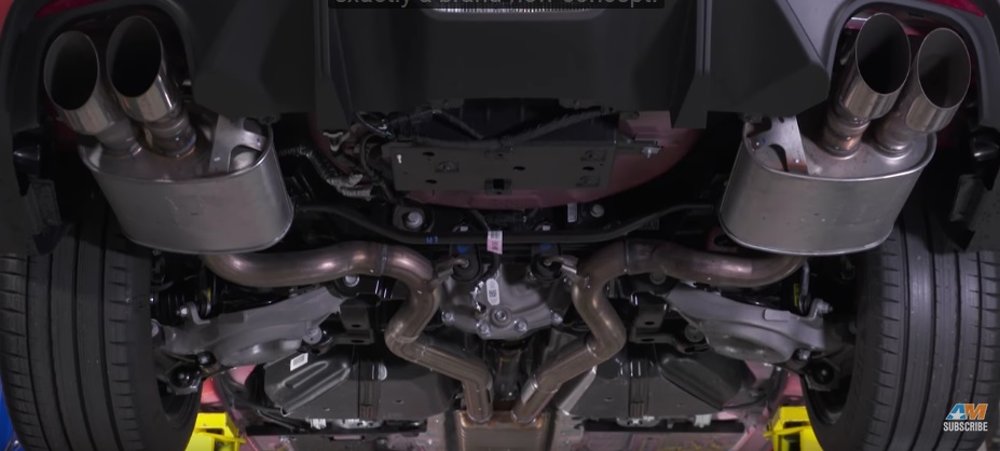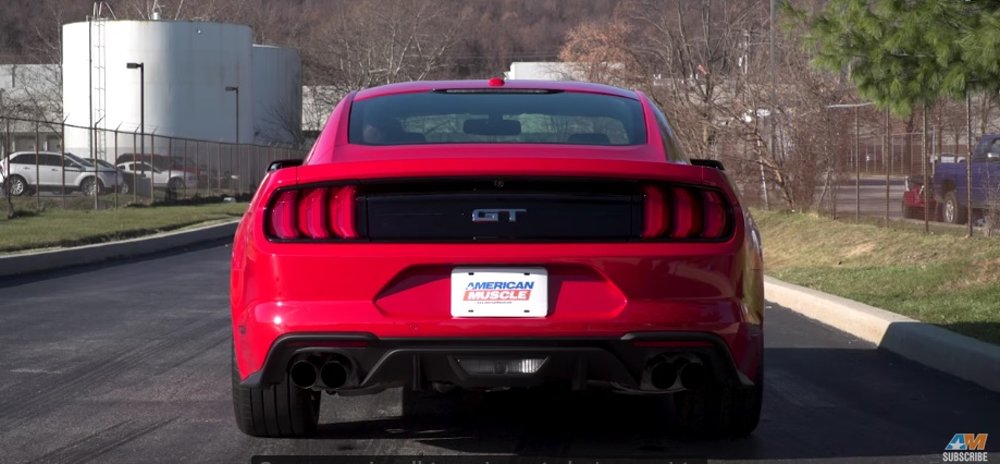How Different are the 2018 Ford Mustang GT’s Exhaust Modes?
The team at AmericanMuscle.com has put together a video detailing the differences among the 2018 Ford Mustang GT’s Active Performance Valve Exhaust modes.
Ford Motor Company has talked a great deal about the 2018 Mustang GT’s Active Performance Valve Exhaust, but the automaker’s press releases only tell us so much about the system. We are left wondering exactly how the system works and how much of a difference each mode makes, but today, those questions are answered.
Our friends at AmericanMuscle.com have put together a video for their YouTube channel with the lovely Stephanie explaining how the 2018 Mustang GT Active Performance Valve Exhaust works and how much of a real difference there is from one mode to the next.
How the GT Active Performance Valve Exhaust Works
The video begins with Stephanie from AmericanMuscle explaining how the 2018 Ford Mustang GT GT Active Performance Valve Exhaust works. If you have read anything about the system, you know that you can select between four different modes – Quiet, Normal, Sport and Track – each of which offers its own unique volume level. However, this system doesn’t just make the exhaust louder or quieter depending on the setting.

The Mustang GT’s GT Active Performance Valve Exhaust uses a set of values within the mufflers to alter the sound of the exhaust based on the mode chosen. Each mode is a bit louder, but this is a true active exhaust system, so when you are driving the new Mustang GT with this setup, the system uses a variety of inputs to constantly adjust the tone of the exhaust. By monitoring engine RPM, engine load and throttle input, the system makes the car louder and quieter on the fly.
For example, if you put the car in Sport exhaust mode and pull out slowly from a stop, the 5.0L V8 might not seem much louder than it does in Normal or Track mode in the same situation. When you put the hammer down, the exhaust valves open, figuring that if you want full throttle – you also want full sound. As you might imagine, Track mode is the most aggressive, so it is the loudest, but it is also the quickest to open the valves whereas Quiet mode opens the valves far later than the other modes.
Yes, even in the Quiet setting, the valves open and that is nicely displayed in the video above.
Measuring the Mustang’s Exhaust Volume
After giving us a walkthrough of how the 2018 Mustang GT’s GT Active Performance Valve Exhaust system works, Stephanie and the new muscle car headed outside for some testing with a decibel meter. With the meter positioned 8-10 feet behind the car, the driver revs the engine a few times before driving away from the camera, adding more throttle as the car gets further away.

During the measuring portion of each run, Quiet mode put out 100.7dB, Normal was 111.9dB, Sport was 113.4dB and Track was the loudest at 114.3dB. When the Mustang drove away from the camera in each mode, pay close attention to how loud the car is under light throttle and as the driver applies more pedal pressure. Quiet mode gets louder, but takes much longer than Track mode, which gets louder much more quickly.
Crank up your speakers and enjoy this detailed rundown of the 2018 Mustang GT GT Active Performance Valve Exhaust.
